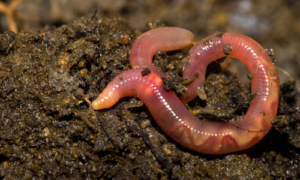So we’ve all heard it a million times – ‘healthy soil’. But what does good soil health really mean? Once again, our Extension Soil Specialist, Dr. Grant Cardon has come to the rescue to help us make sense of the phrase ‘healthy soil’ – dig in to discover more below. For archived Dirt Diggers Digest posts, click here. Diggin’ it!
What is soil health and why am I hearing so much about it?
Over the last four or five years there has been much interest and discussion regarding soil health. For decades, the soil, environmental, agronomy, horticulture, and ecology scientific communities have debated the issues and benefits of the sustainability of use, and conservation of soil. From that debate, and a plethora of research devoted to defining and redefining terms and conditions applied to these important concepts, “soil health” has emerged as the educational face of efforts to protect and improve the quality and productivity of this crucial, life-sustaining resource.
Soil Health is defined as “…the continued capacity of soil to function as a vital living ecosystem that sustains plants, animals and humans.” Of course, only living things can have “health” and the hope of the educational effort surrounding “soil health” is to emphasize the critical nature of the life of soil beyond the inherent physical properties of the mineral components.
In 2015, coincident with the International Year of Soil, the USDA-NRCS established its Soil Health Division (see link to the agency website below). This agency, in cooperation with non-profit outreach organizations such as the Noble Foundation and the Soil Health Institute (see link below), conducted scientist focus group discussions in 2016 tasked with defining “soil health” and determining the measurable indicators of its status. The outcome of this process forms the guidance for eventually conducting a nationwide baseline assessment of soil health to inventory current conditions and to which changes over time will be compared.
Five leading indicators of soil health emerged from the 2016 focus group discussions, including soil aggregate stability (featured in my March 2018 Dirt Diggers Digest post), general biological activity, microbial diversity, active carbon content, and organic nitrogen availability. Chief among these indicators was soil aggregate stability, which is universally seen as the integrator of all other indicators. In other words, soil structure is a function of the interplay of soil minerals, carbon and nitrogen cycling, and diverse, active microbial communities.
To promote soil health, and improve it where needed, the NRCS and other agencies are working to promulgate specific guidelines appropriate to varied regional climate and soil constraints. Beneficial practices have been identified in the areas of crop rotation, cover crop usage, tillage minimization and crop residue management, and integrated nutrient, pest and irrigation management. For more detail, see the link for the NRCS’s soil health checklist below.
Already, several states have begun to formulate soil health scorecards designed to take suggested measurements of the indicators noted above and objectively rate current conditions and identify areas of focus for improvement. A link to an example scorecard for the state of Idaho, produced by local USDA-NRCS staff, is also noted below.
I will revisit this topic as more information comes available regarding the National Soil Health Assessment effort, and the role that Utah and the Intermountain West will play in it. This overview of the topic and the key elements of the educational and scientific efforts behind it is just a sample of the information available. I encourage you to become educated as much as possible because soil stewards in agriculture, production horticulture, small farms and ranches, and other settings will likely be required to provide an accounting of soil health condition and improvement progress in the near future.
FOR FURTHER READING
The USDA-NRCS Soil Health Division’s website: https://www.nrcs.usda.gov/wps/portal/nrcs/main/national/soils/health/
The Soil Health Institute’s website: https://soilhealthinstitute.org/
The NRCS’s soil health practices checklist: https://www.nrcs.usda.gov/wps/PA_NRCSConsumption/download?cid=stelprdb1049264&ext=pdf
The NRCS’s Idaho soil health scorecard: https://www.nrcs.usda.gov/wps/PA_NRCSConsumption/download?cid=stelprdb1261704&ext=pdf




Leave a Reply